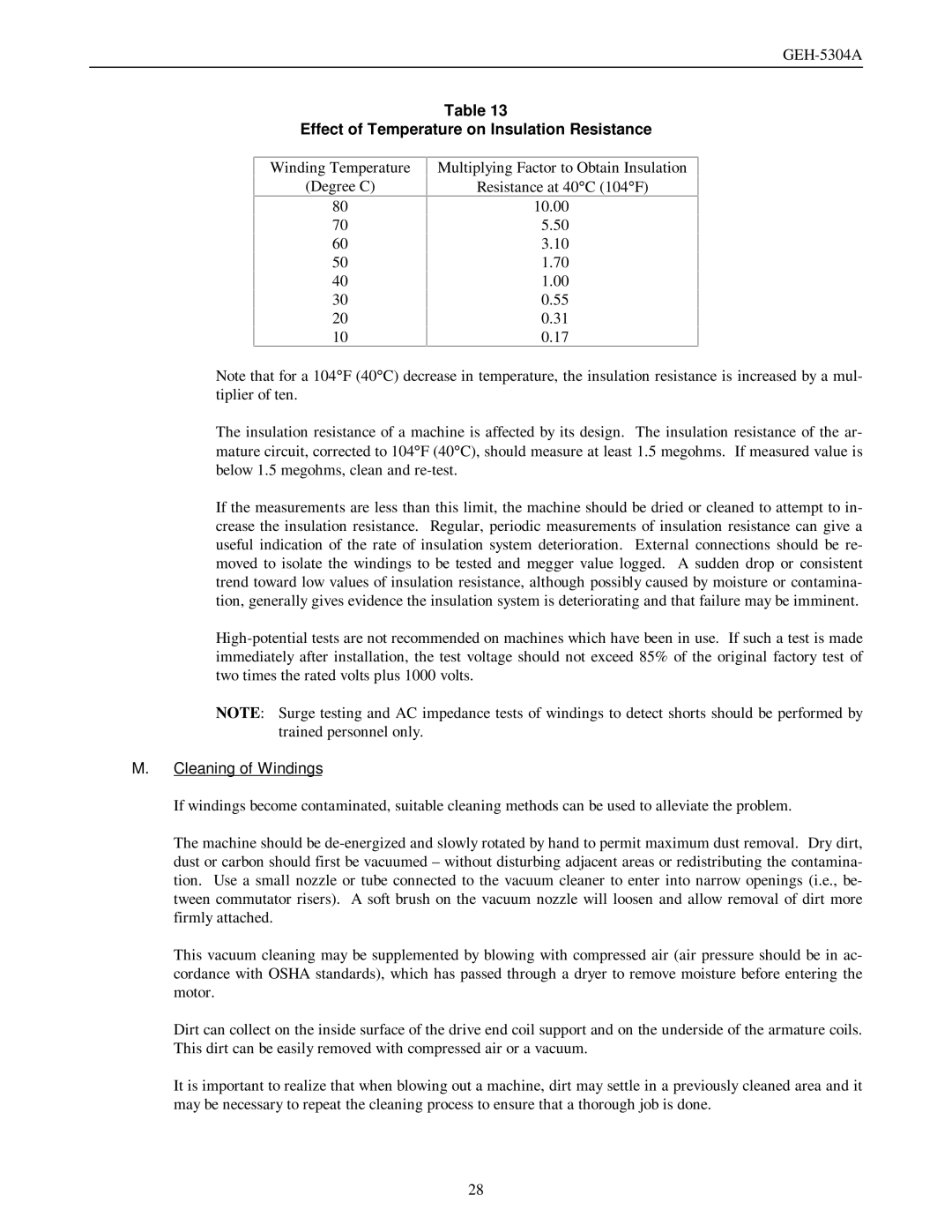GEH-5304A specifications
The GE GEH-5304A is a sophisticated electronic device that has garnered attention for its applications in various industrial sectors. This cutting-edge equipment is primarily used for monitoring and controlling processes through advanced technology integration, making it a valuable asset for businesses looking to enhance operational efficiency.One of the standout features of the GE GEH-5304A is its robust data acquisition system. This system effectively collects, processes, and analyzes data from multiple sensors and instruments, enabling real-time monitoring of critical parameters. With its high sampling rate and accuracy, the GEH-5304A ensures that users can make informed decisions based on reliable data, thus minimizing risks and enhancing productivity.
The GEH-5304A integrates seamlessly with various communication protocols, including Ethernet, RS-232, and RS-485. This versatility allows it to connect effortlessly to existing infrastructure and facilitates data sharing across different platforms. This interoperability is essential in modern industrial environments, where different systems must communicate for optimal performance.
Another key characteristic of the GEH-5304A is its user-friendly interface. The device features an intuitive display that provides clear visualizations of data trends, alarms, and system statuses. This ease of use empowers operators to quickly identify issues and make necessary adjustments, thereby reducing downtime and improving overall operational reliability.
In terms of advanced technology, the GEH-5304A boasts built-in diagnostics and predictive maintenance capabilities. These features enable it to identify potential problems before they escalate into failures, allowing for proactive maintenance and minimizing costly unscheduled outages. Moreover, the device's ability to log historical data plays a crucial role in trend analysis and long-term planning.
Durability is another hallmark of the GE GEH-5304A. Designed to withstand harsh industrial conditions, it demonstrates resilience against temperature fluctuations, vibration, and dust. This robustness enhances its longevity and reduces the frequency of replacements and repairs.
In summary, the GE GEH-5304A stands out in the market due to its advanced data acquisition capabilities, compatibility with multiple communication protocols, user-friendly interface, predictive maintenance functionalities, and rugged design. These features make it an essential tool for industries seeking to optimize performance, enhance monitoring, and ensure process reliability. With the ongoing evolution of technology, devices like the GEH-5304A are pivotal in driving operational success across various sectors.

